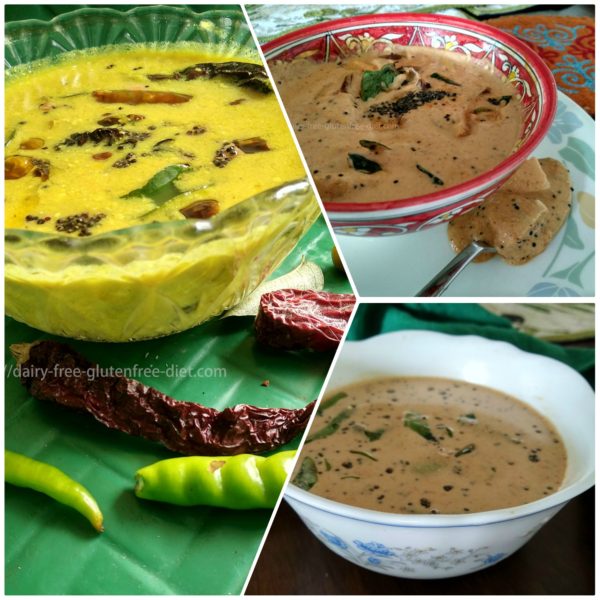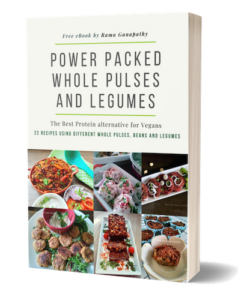
26 Oct Morkuzhambu More n More
Morkuzhambu is a delicacy for Tamil Nadu what is Majjiga Pulusu / Chaaru is for Andhra region and Kadhi is for other parts of India that uses Curd / yogurt as base. I have already shared majjiga chaaru recipe in my earlier post.
There are different varieties of morkuzhambu. The dish is so versatile that by tweaking some spices you churn out a different dish that tastes different. Its amazing how that subtle tweaking gives a totally different flavour to the new dish.
I give below 3 varieties of the morkuzhambu.
Being a non-dairy person, I have used groundnut curd in all these recipes. Trust me, groundnut curd tastes best when made into kadhi / morkuzhambu. Having been fed with curd right from childhood just as all South Indian families do, I missed it and curd dishes when I had to leave dairy. But this groundnut curd has been my saviour all along.
I’m not sharing the most common and basic morkuzhambu recipe that uses the curd mixed with coconut, green chilli, cumin paste along with vegetables, for the simple reason that many of you may be familiar with it.
This post is for those other exotic varieties of morkuzhambu.
1. Pachai Morkuzhambu
It literally means it’s a raw and no cook recipe using curd. What differentiates it from Raita is that it is spiced up with some roasted spice paste (and occasionally roasted vegetable like Ladyfinger) whereas raita uses raw ingredients and raw green veggies.
Each family has its own version of Pachai morkuzhambu. Some add cumin seeds, some don’t, some add coriander leaves while some do not, some add dry red chillies, some add green chillies. Be it any version, the final outcome is a delicious spiced up curd that can be churned in a jiffy.
Direction:
- Heat 1 tsp oil and roast 1 tsp coriander seeds, 1 tsp channa dal, 1 tsp urad dal, ½ tsp fenugreek seeds and 2 dry red chillies (or 2 green chillies) and grind to a smooth paste with 1 tsp fresh coconut (optional).
- Take 1 cup not very sour beaten curd and add the paste and salt.
- Temper with mustard seeds and asafoetida and add to the curd mixture.
- Add a sprig of fresh curry leaves.

2. Vedikka Vitta Morkuzhambu
This is a variation that does not use coconut. The spices are not ground but added whole in the tempering. Preferred vegetables are ladies finger and pickled Sundaikkai (Turkey berry). But it can be made without them too. I had pickled Sundaikkai, so added it. The bitter taste adds a special flavour to this morkuzhambu which my family loves.
Directions:
- Mix 2 cups buttermilk with 1 tablespoon Besan (kadalai mavu) and turmeric powder.
- In a kadai heat 1 tsp oil, add 1 tsp mustard seeds, 2 tsp tur dal, ½ tsp methi seeds, 2 dry red chillies and few curry leaves and roast till tur dal becomes red.
- Add 2 green chillies & a small piece of ginger cut finely and roast for a while
- If you are adding vegetable, add at this stage and add salt.
- Keep stirring till vegetables are done.
- Lower flame and add the buttermilk and besan mixture.
- Boil slowly till it froths.
- Switch off flame and serve with rice.
When consumed hot, this is a comfort food when you feel sick in the stomach.

3. Morkuzhambu with Tamarind
This a specialty from Tirunelveli district of Tamil Nadu. It is also called Iru Puli Kuzhambu. It uses partly sour curd and partly tamarind. Most vegetables like raw banana, white pumpkin, red pumpkin, any squash vegetable, brinjal, carrot, root vegetables, etc can be added in this. I used 1 arbi (colacasia), 1 potato and 1 brinjal.
Ingredients:
- 1 cup medium thick buttermilk / curd
- Pulp of small gooseberry sized tamarind soaked in water and squeezed / 1 tablespoon tamarind paste*
- Vegetables of your choice
- Salt to taste
- Turmeric powder
*If your curd is sour, reduce the tamarind quantity and vice versa
For the spice paste:
- 2 tsp tur dal,
- 1 tsp urad dal
- 4 to 5 red chillies
- ½ tsp fenugreek seeds
- 5 to 6 tablespoons fresh grated coconut
- 1 tsp oil
Tempering: 1 tsp coconut oil & 1 tsp mustard seeds
Directions:
- Roast the spices in 1 tsp oil till the dals become brown, add coconut and grind to a fine paste adding buttermilk / curd. Add it to the rest of the buttermilk
- Add ½ cup water to tamarind pulp / paste, add the vegetables, salt and turmeric powder and bring it to boil till the vegetables are done.
- Reduce flame and add the buttermilk with spice.
- Bring it to just one boil. Switch off the flame.
- Heat 1 tsp coconut oil, add the mustard seeds and once they splutter add to the morkuzhambu. Add curry leaves and garnish.





Sorry, the comment form is closed at this time.